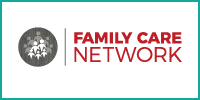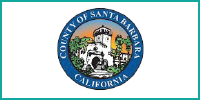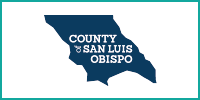What You Will Need:
- Any W-2s from the last year (your employer will send them to you)
- Any 1099-INT Forms (your bank would send you these forms)
- 1098-T (this would be sent you by your school for the tuition you paid)
- Federal Taxes: Form 1040, 1040A, or 1040 EZ (you can get these forms from your local IRS office or print them from online)
- California State Taxes: Form 540 2EZ, Form 540, Short Form 540NR, or Long Form 540NR (see below if you are unsure of which form to use)
- The Instruction booklet/packet for whatever forms you decide to use. You can get these at your local IRS office or find the instructions online.
- If you are unsure about which form to use, maybe just grab two of each form, and an instruction booklet for each one so that you don't have to go back to the office.
- It is a good idea (if you are at the IRS office rather than printing the forms offline) to grab an extra copy of each, just in case you make a mistake.
- You might also consider using pencil for the first one you fill out, and then you can copy the information on to the second form in pen once you are done.
- A computer if you plan on filing electronically
- A software program such as TurboTax, H&R Block At Home, TaxACT, Complete Tax Online Tax Software, IRS Free File, eSmart Tax Basic edition, or Tax Slayer Free Edition (most of these sites will allow you to file your federal taxes for free, but will charge you a fee to file your state taxes)
- A printer to print a copy of your return
- A calculator
Filing Taxes Deadline:
April 15
At this point in your life, you probably don't need to hire a tax preparer to do your taxes. They are expensive and really aren't worth it unless you have a lot of deductions and itemizations (and make enough to pay them: they cost about a few hundred dollars). Taxes may not seem fun, but you only have to do them once a year, and sometimes you even get money back. So take a deep breath, relax, and here's some tips about how to get started.
Getting Started
Once you have gathered all of the needed materials from the list above, figure out what form you need to use.
Federal Taxes
The 1040 EZ form is the easiest to fill out, and you may find that this is the one you would like to work with. Continue reading below to find out the differences between the three forms: 1040EZ, 1040A, and the 1040.
Why Choose the 1040EZ:
- Your filing status is single or married filing jointly.
- You don’t claim dependents.
- Your taxable income is less than $100,000 .
- Your taxable interest is $1,500 or less.
- You don’t claim adjustments to income, like student loan interest deduction or an IRA deduction.
- The only credit you claim is the Earned Income Tax Credit.
- You, and your spouse, if filing a joint return, were under age 65 and not blind at the end of 2012. If you were born before Jan. 1, 1948, you’re considered to be age 65 and can’t use Form 1040EZ.
- You don’t owe household employment taxes on wages you paid to a household employee.
- You aren’t a debtor in a Chapter 11 bankruptcy case filed after Oct. 16, 2005.
- You don’t owe Alternative Minimum Tax (AMT) or aren’t required to file Form 6251: AMT.
- Your income sources were only wages, salaries, tips, taxable scholarships, taxable fellowship grants, unemployment compensation or Alaska Permanent Fund dividends.
Disadvantages of the 1040EZ:
- You can’t itemize tax deductions, and you can’t have income from self-employment, alimony, dividends or capital gains.
- You can’t claim credits or deductions, with the exception of the Earned Income Credit (EIC). So you can’t claim charitable donations, mortgage interest paid, credits for child and dependent-care expenses or education credits.
Why Choose the 1040A:
- If you make less than $100,000 in taxable income
- If your income only comes from the following sources:
- Wages, salaries, and tips (this is generally where income comes from for most people)
- Interest and dividends
- Capital gain distributiions
- Taxable scholarship and fellowship grants
- Pensions, annuities, and IRAs
- Unemployment compensation
- Taxable Social Security and railroad retirement benefits
- Alaska Permanent Fund dividends
- Only adjustments to income that you can claim are the IRA standard deduction and the student loan deduction (you can also claim tuition and fees deduction)
- If the only credits you need to claim are of the following:
- Child tax credit
- Additional child tax credits
- Education credits (i.e., Hope and Lifetime Learning Credits: Form 8863)
- Earned Income Credit (EIC)
- Credit for child and dependent-care expenses
- Credit for the elderly or disabled
- Retirement savings contributions credit
- If you need to file for dependent-care benefits or owe tax from the recapture of an education credit or the Alternative Minimum Tax (AMT).
Disadvantages of the 1040A:
- You can't itemize deductions, such as charitable donations
- Can't claim an AMT adjustment (which most likely won't apply to you, unless you make an extremely large amount of money)




